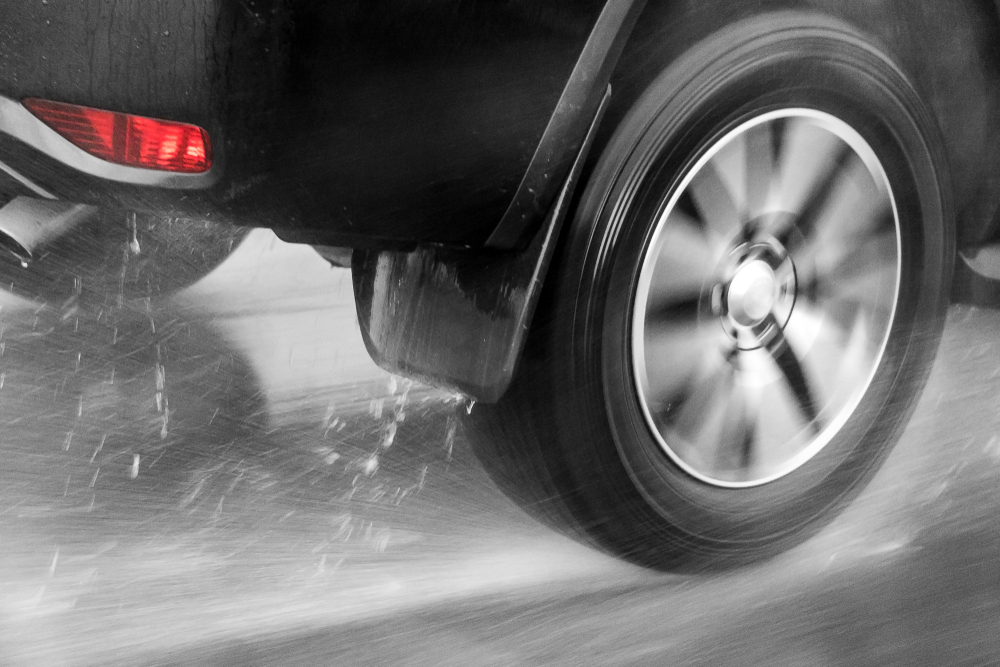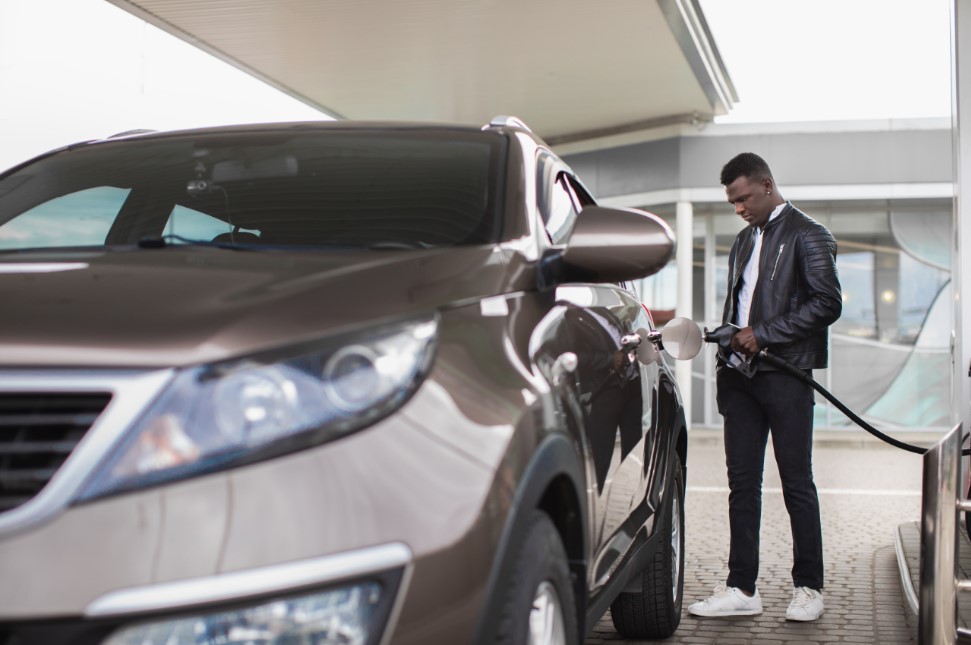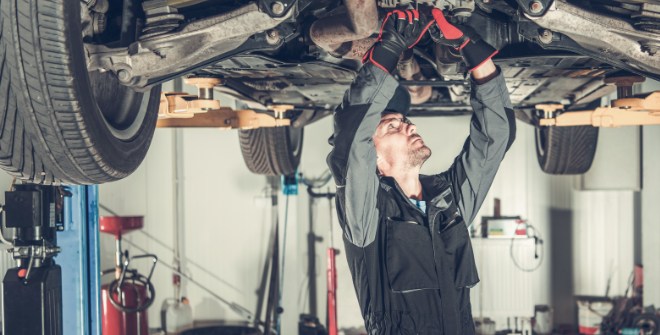What is Hydroplaning & How Do You Prevent It?

If you’ve ever driven in the rain before, you’re probably aware of a unique issue that can happen without warning and make you lose control of your car. This phenomenon is called “hydroplaning,” and has the potential to be extraordinarily dangerous if you don’t know when it may happen and how to handle it if it does. To help you drive safer and get to your destination more reliably when the weather turns sour, our auto repair experts will explain what hydroplaning is and how you can prevent it on this blog.
What Is Hydroplaning?
We have to start our conversation about hydroplaning by first answer the question about what it is. Hydroplaning is the name for the phenomenon of your tires actually floating on a small patch of rain water, causing them to lose traction with the road beneath you. But wait, how can your tires float on about a quarter-inch of water when your car weighs thousands of pounds…? The answer is two-fold: speed, and surface tension. When your car is traveling quickly and suddenly hits a puddle of water, the surface tension of the water actually supports the weight of the tires just briefly. The faster you’re going, the easier it is for the water to do this, and the longer your tires will float. It’s not uncommon for cars traveling at 60 to 70 miles per hour to hydroplane for 30 to 40 feet or more.
A few different things can actually make this problem worse, and arguably the biggest one is worn-out tires. When your tires are worn and the tread is extremely thin, the channels in your tread become shallow, which increases the amount of surface area exposed to the water below. Tires with a deep tread have several smaller areas to expose to the water, as well as channels that the water can squeeze into, which breaks the surface tension and allows the water to flow into the tread grooves, which prevents hydroplaning and keeps you safely on the road.
Why is this dangerous? Because when your tires are floating above the surface of the road, they aren’t making contact with it, which makes them free to slide, slip, and move about in unpredictable ways. Thus, hydroplaning can actually cause you to lose complete control of your vehicle, spin out, or even crash into an obstacle or another motorist. When you’re hydroplaning, your brakes won’t work, and in fact slamming on your brakes can actually cause this loss of control.
What to Do if You Hydroplane
If you hydroplane, the number one thing you absolutely shouldn’t do is panic. Panicking, jerking the wheel, or slamming on your brakes usually only causes you to lose control and exacerbates the problem. Instead, if you feel your car start to hydroplane, keep your hands steady on the wheel, keep the wheel pointed straight ahead, and slowly ease off the gas pedal until you feel the wheels of your car make contact with the road again.
Likewise, if you find yourself hydroplaning, there’s a good chance it’s because there’s a particularly large collection of water in the lane on the road where you’re driving. This tends to happen most frequently in the right-most lane, which is usually the side of the road that most streets are sloped to for drainage purposes. These areas can still have pretty large puddles, so never assume that the “slow” lane on any street is the safest one in wet weather.
How to Prevent Hydroplaning
There are two proven ways to reduce your chances of hydroplaning and stay safe while driving in wet weather. The first is to follow the “optimal speed” principle. Essentially, this principle is that the speed limit you should follow is the fastest you can safely operate on any road in the given conditions. In many cases, the optimal speed you should be driving is actually below the posted speed limit in wet weather, especially when puddles may be present. Slowing down can help you keep your tires on the road and you in complete control of your car.
Second, change your tires when they wear out. Every state is different, but most require you to have a minimum of anywhere between 1/32” and 2/32” of tire tread in order for your tires to be legal. However, they become dangerous far before they reach that level. Each tire is equipped with small “wear bars” in the tread which tell you about how much life you have left on your tires. If your tread has worn down to the point where your wear bars are also being worn down, then you need to replace your tires right away.
About Christian Brothers Automotive
For over 30 years, Christian Brothers Automotive has provided honest, dependable auto care services to the communities we serve. Our ASE-Certified technicians are upfront and transparent about the condition of your car so you can make the best decision possible. When it comes to getting the job done right, we always use name-brand parts from quality manufacturers for a result you can trust. And we top it all off with customer service that simply isn’t matched anywhere else.
Call your local Christian Brothers Automotive today if you need your tires replaced, brakes checked, or any other service to help you avoid hydroplaning this rainy season!
Posted by, Christian Brothers Automotive


[1].jpg)
sunwash-tech-with-customer.png)

